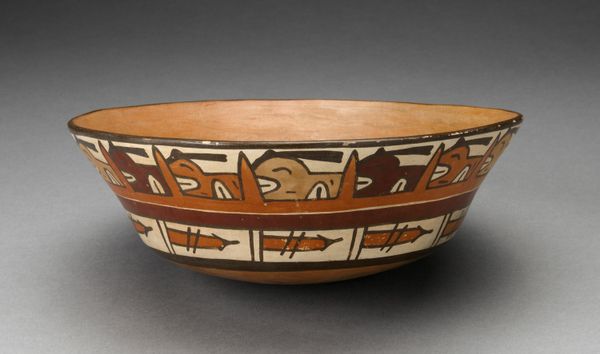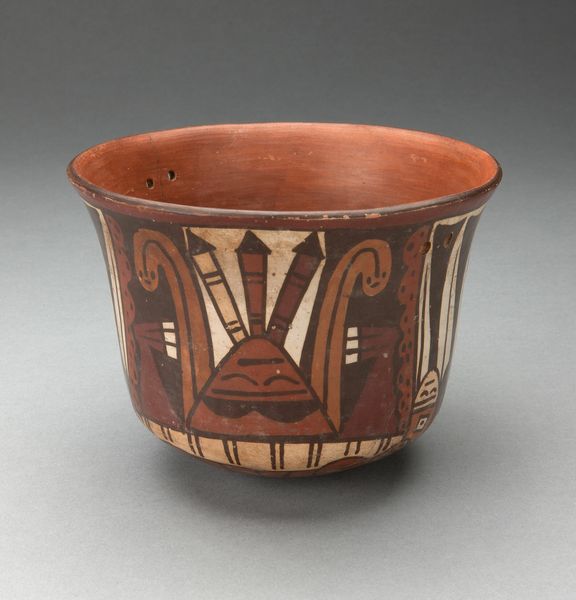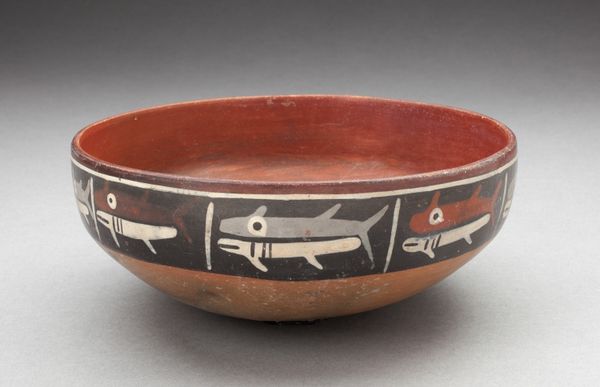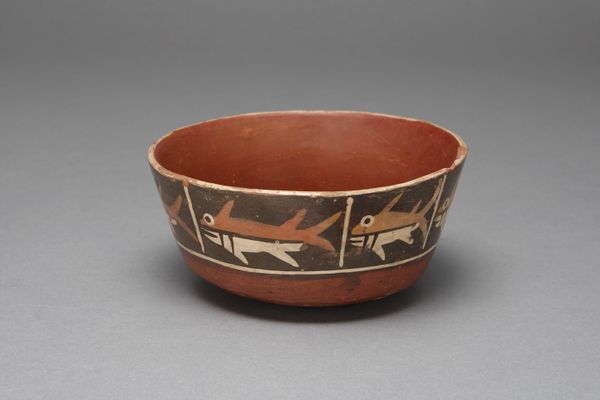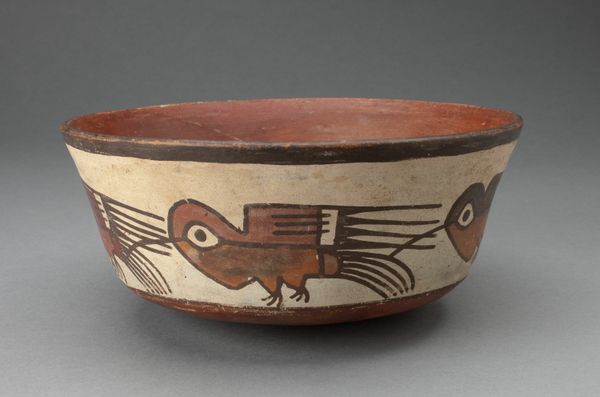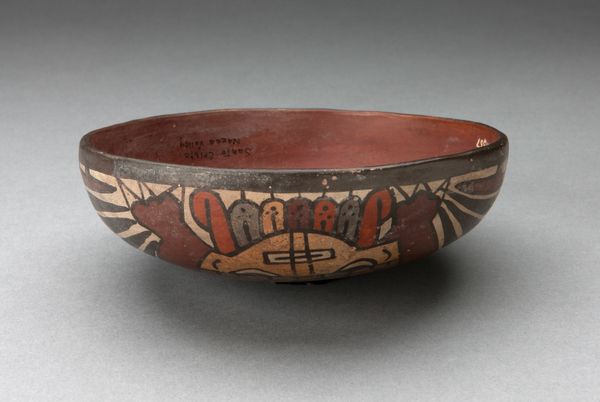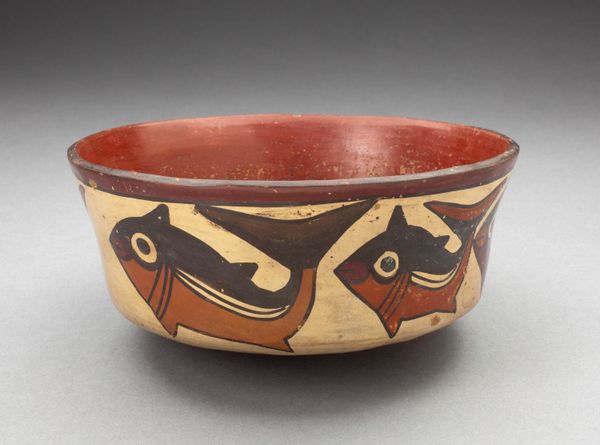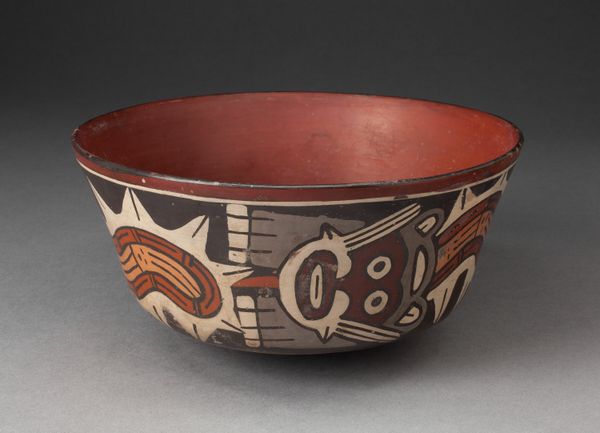
MIniature Flared Bowl Depicting Trophy Heads and Abstract Peppers c. 180 - 500
0:00
0:00
ceramic, earthenware
#
pottery
#
ceramic
#
earthenware
#
geometric
#
ceramic
#
indigenous-americas
Dimensions: 7.6 × 15.9 cm (3 × 6 1/4 in.)
Copyright: Public Domain
Curator: We're looking at a flared bowl, a ceramic piece created by the Nazca culture sometime between 180 and 500 AD. The Art Institute of Chicago holds this little marvel. Editor: Marvel is right. It’s unassuming but powerful. That reddish-brown, and the stark contrasts of black and white... it almost hums. It makes me wonder about the hands that formed it, so long ago. Curator: It's narrative art, of a sort. The exterior features trophy heads and what appear to be stylized peppers, all rendered with geometric precision. Imagine the skill required to paint those patterns on earthenware without the tools we have today! Editor: Absolutely. That earthenware tells a story too. It's the very earth, processed, fired, then imbued with symbolic meaning. Look at those trophy heads. War and agriculture, bound together through ritual, no doubt reflecting beliefs about fertility, power and... sacrifice. I imagine the clay's extraction and refinement involved communal labor. Curator: I think of them more as powerful symbols than literal depictions. Perhaps, a meditation on themes of abundance and renewal following conflict. A hope painted in earth. I feel there's a direct line of communication from the artists and these forms that transcends the violence inherent in it. Editor: Hope yes, I agree but it also brings up ethical questions. Knowing this was crafted in a society built on power dynamics and resource extraction does alter my viewing, yet seeing the fingerprints of the artist—literally and figuratively—in the medium is humbling. What was its use, beyond the symbolic? For serving food or liquid? Burial ritual? It would alter our reception once more! Curator: Maybe all of the above! It serves as an object for both ceremonial use and, now, for contemplating humanity's complex relationship with life, death, and, indeed, even peppers. I do find it beautiful to know it had a use outside a white wall as well. Editor: It truly shows how fundamental material analysis is to how we value and understand art across time and culture. Even its state of minor damage today hints at that journey through time. Curator: Ultimately, its beauty persists, urging a response from those of us engaging with it, however fragmented its tale or use now seem. Editor: Yes, exactly, still resonating, its physical and artistic origins a powerful intersection.
Comments
No comments
Be the first to comment and join the conversation on the ultimate creative platform.

